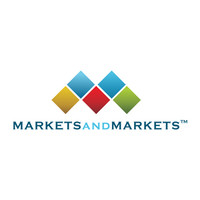LED Light Engine Market Growth, Manufacturers, Dynamics, Overview, Revenue 2024
The LED Light Engine Market is estimated to be worth USD 30.0 billion in 2019 and USD 59.5 billion by 2024, rising at a CAGR of 14.7% throughout that period. Key factors influencing the market growth for LED Light Engines include increasing demand for energy-efficient lighting systems, infrastructure development and modernization, such as in smart cities, the availability of inexpensive LEDs, their introduction into general lighting, and the rapid advancement of LED technology relative to conventional lighting technology.
Download PDF Brochure @ https://www.marketsandmarkets.com/pdfdownloadNew.asp?id=16450611
GE Lighting (US), Cree, Inc. (US), Hubbell Inc. (US), Zumtobel Group AG (Austria), Wipro Enterprises (P) Ltd. (India), Samsung Electronics (South Korea), LG Innotek (South Korea), Legrand SA (France), Glamox AS (Norway), and Lutron Electronics Co., Inc. (US) are a few of the major companies operating in the LED light engine market. To increase their revenue in the market, major corporations are concentrating on new launches, developments, and mergers and acquisitions. In order to maintain their position in the LED Light Engine Market, Signify Lighting NV (Netherlands), OSRAM (Germany), and Cree, Inc. (US) are actively participating in product launches and advancements.
Top 2 Players in LED Light Engine Market:
In the market for LED light engines, Signify Lighting NV (Netherlands) (Philips) is now rated first. The company's primary competencies are seizing market opportunities and adding value for its clients. The company has been able to leverage on the basic market trends occurring in the lighting industry and to produce cutting-edge solutions that create value and guarantee its growth thanks to its developed market experience and brand identity. In terms of a percentage of sales, Signify invested in R&D in 2017 to the tune of 5.3%. It keeps up research and development to create lighting systems that are more intelligent and energy-efficient. Since there isn't a single global standard that formally defines EyeComfort, Signify included it to their lineup of consumer LED lamps and luminaires in March 2018. Warm dimming, high colour rendering white, adjustable white, colour lighting, and effective light mixing and distribution are only a few of the innovations covered by Philips Lighting's LED patents.
Speak to Analyst @ https://www.marketsandmarkets.com/speaktoanalystNew.asp?id=16450611
By predicting and managing the phase-out of conventional products, the firm hopes to continue investing in LED leadership while using a broad product portfolio, extensive distribution, and strong brand identity in conventional and LED lighting. Philips was able to secure multiple contracts to provide connected LED systems and other lighting control equipment thanks to this crucial strategy. For instance, in June 2018, Signify (Philips Lighting) and Agro-Inwest LLC (Russia), the most advanced and quickly expanding business, signed a contract to cultivate fresh vegetables and increase the use of Philips LED lighting for growing tomatoes from its current 25 hectares to 68.5 hectares—an area of greenhouses equal to 100 soccer pitches. In order to further solidify its position as the industry leader, Signify (Philips Lighting) also purchased Shenzhen LiteMagic Technologies Co., Ltd. in May 2018. This Chinese company was a manufacturer and supplier of lighting luminaires and control systems.
OSRAM (Germany) is ranked second in the market for LED light engines. OSRAM declared its aim to concentrate more on the market for LED components, smart lighting, and automotive lighting. The company aims to target the business-to-business (B2B) and semiconductor industries, where there is potential for larger profit margins, by rearranging business segments and eliminating underperforming businesses. The business is growing its facilities and investments based on LED chips in Malaysia and Germany. The company is anticipated to rely on its core competencies in R&D and innovations for any future market expansions. For automotive lighting, smart lighting, and other lighting applications, it has introduced a number of innovative products. For instance, OSRAM introduced Osconiq S3030, an LED in November 2018 that enables clients to create luminaires with the highest quality, the longest operational life, and the greatest resilience. These LEDs feature a long operational life, excellent durability, and great performance in order to meet professional requirements in a variety of general lighting applications. In order to expand its sales and distribution in Germany and Asia, OSRAM also acquired BAG Electronics GmbH (Germany), a Trilux subsidiary that specialised in LED modules and software for cutting-edge LED lighting solutions, in March 2018. This move strengthened OSRAM's electronic component business.
Browse For More Details - https://www.prnewswire.com/news-releases/led-light-engine-market-worth-59-5-billion-by-2024--exclusive-report-by-marketsandmarkets-300861405.html




Comments
Post a Comment